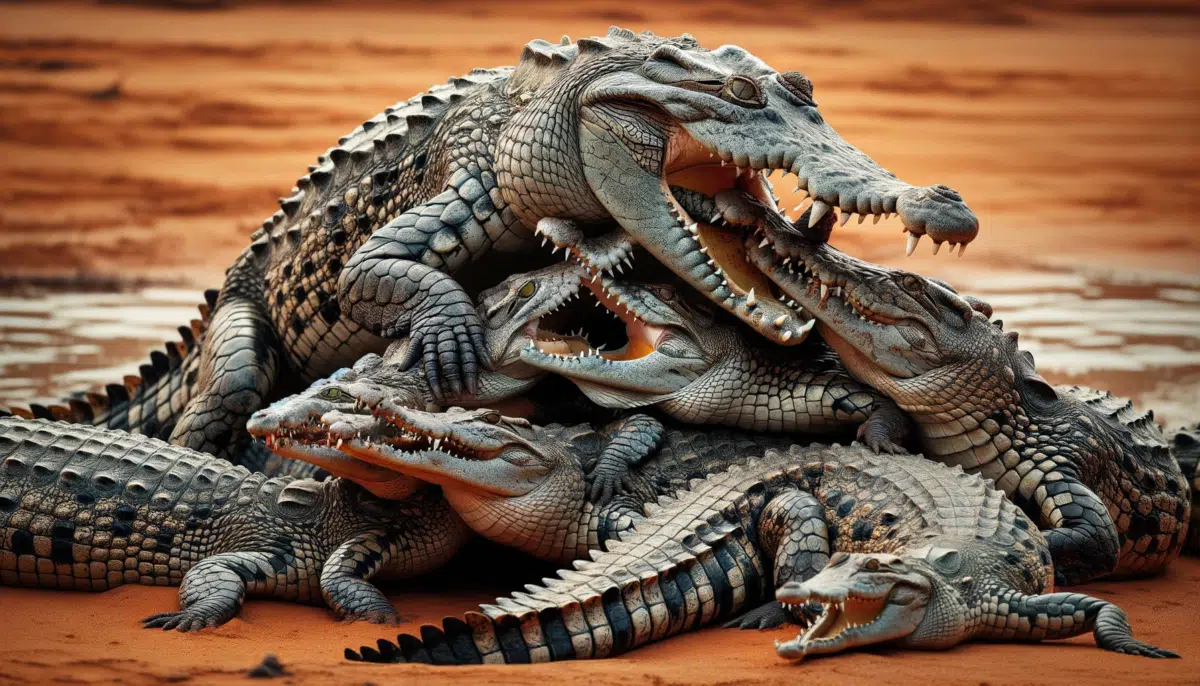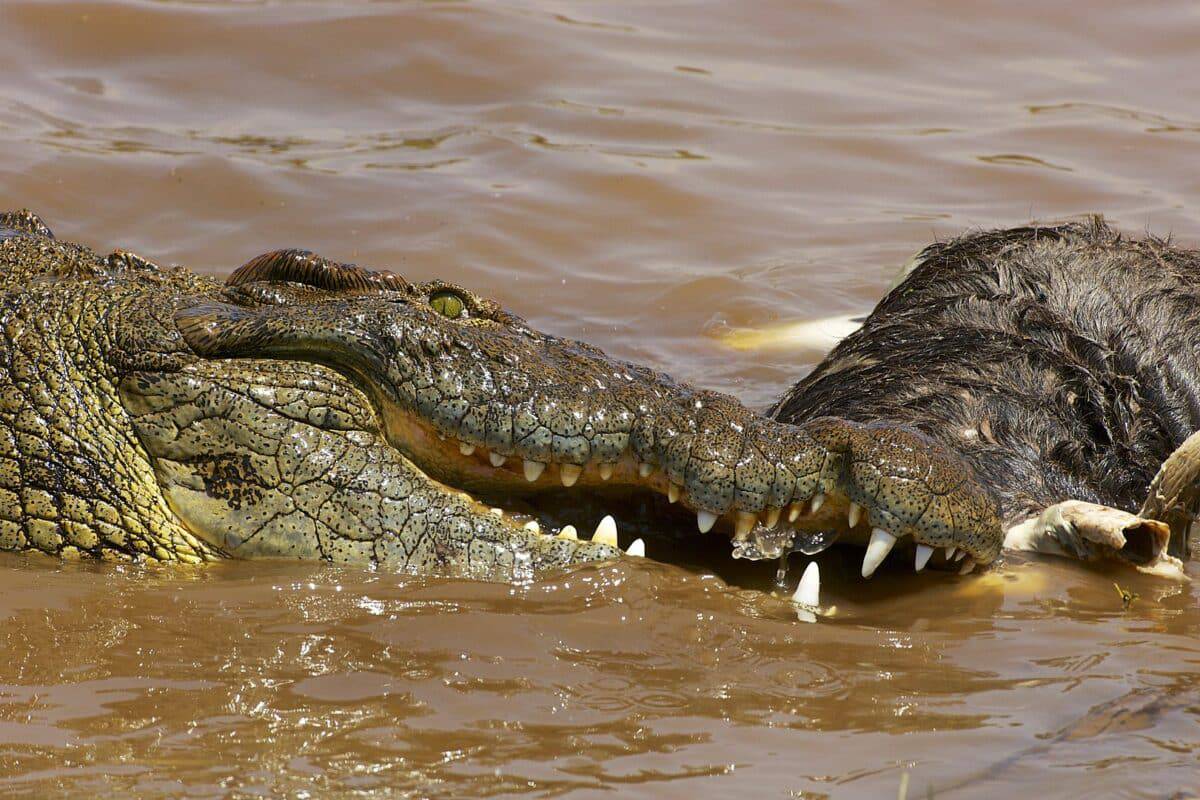Crocodiles are one of the dinosaurs’ closest relatives and brutal predators. They can be so brutal that they don’t hesitate that they chomp down on their companions, like this crocodile seen eating its friend’s foot.
Crocodile Eating Another’s Foot: The Video
The video, shot at a crocodile farm, reveals an intriguing aspect of crocodile behavior. Over ten crocodiles are seen basking together when feeding time erupts into a frenzy. As chickens are tossed into the enclosure, one crocodile, perhaps driven by hunger or instinct, bites down on another’s foot, mistaking it for chicken.
A Crocodile’s Bite Force
A crocodile’s bite is one of the most powerful in the animal kingdom. Measured at a staggering 3,700 pounds per square inch, it’s strong enough to crush bones with ease. This immense force is necessary for their survival, helping them catch and consume their prey, which includes fish, birds, and occasionally, mammals.
Captive Crocodiles: What’s On the Menu
In captivity, crocodiles are typically fed a diet that mimics their natural food sources. This includes fish, meat, and in some cases, poultry like chickens. Feeding practices are designed to ensure nutritional balance and maintain the crocodiles’ health.
But as seen in the video, feeding time can trigger their instinctual aggressive behaviors which disregards what kind of animal they attack.
Crocodiles Can Go Months Without Eating
Crocodiles, surprisingly, don’t need to eat every day. Despite being massive animals, adult crocodiles can survive on a few pounds of meat per week, thanks to their slow metabolism. In the wild, they can go months without a meal, depending on the availability of prey. Many farms and zoos adopt this infrequent feeding to align with their natural habits.
Nature’s Natural Armour
Crocodiles sport distinctive thick, rugged skin, a natural armor that provides formidable protection.
This tough hide, composed of bony structures called osteoderms, shields them against predators and environmental hazards. Each square inch of a crocodile’s skin contains sensory pits, allowing them to detect changes in water pressure and vibrations. This armor also plays a crucial role in thermoregulation, helping these cold-blooded creatures maintain their body temperature.
One of the Closest Relatives to Dinosaurs
Crocodiles are one of the closest living relatives to dinosaurs – which doesn’t seem farfetched at all considering their terrifying look. They belong to a group of reptiles that have been on Earth for over 200 million years. Being such close relatives to dinosaurs, studying them helps scientists understand evolutionary biology.
Crocodile Eating Another’s Foot: Conclusion
As remnants of a prehistoric era, crocodiles remind us of the resilience and complexity of the natural world. Although this crocodile mistook its companion’s foot for dinner, it escaped unscathed thanks to the crocodile’s hardy armor.
Thank you for reading this article about the crocodile that can be seen eating its companion’s foot! Uncover more about these prehistoric reptilians here:
- Watch: Crocodile Family Found Living In Pavement
- Desperate Lions Catch Crocodile to Feed Cubs; Watch the Intense Video Here
- Alligator Tries to Eat Stork But Gets Eaten by Crocodile
Join our Forum for free today!




